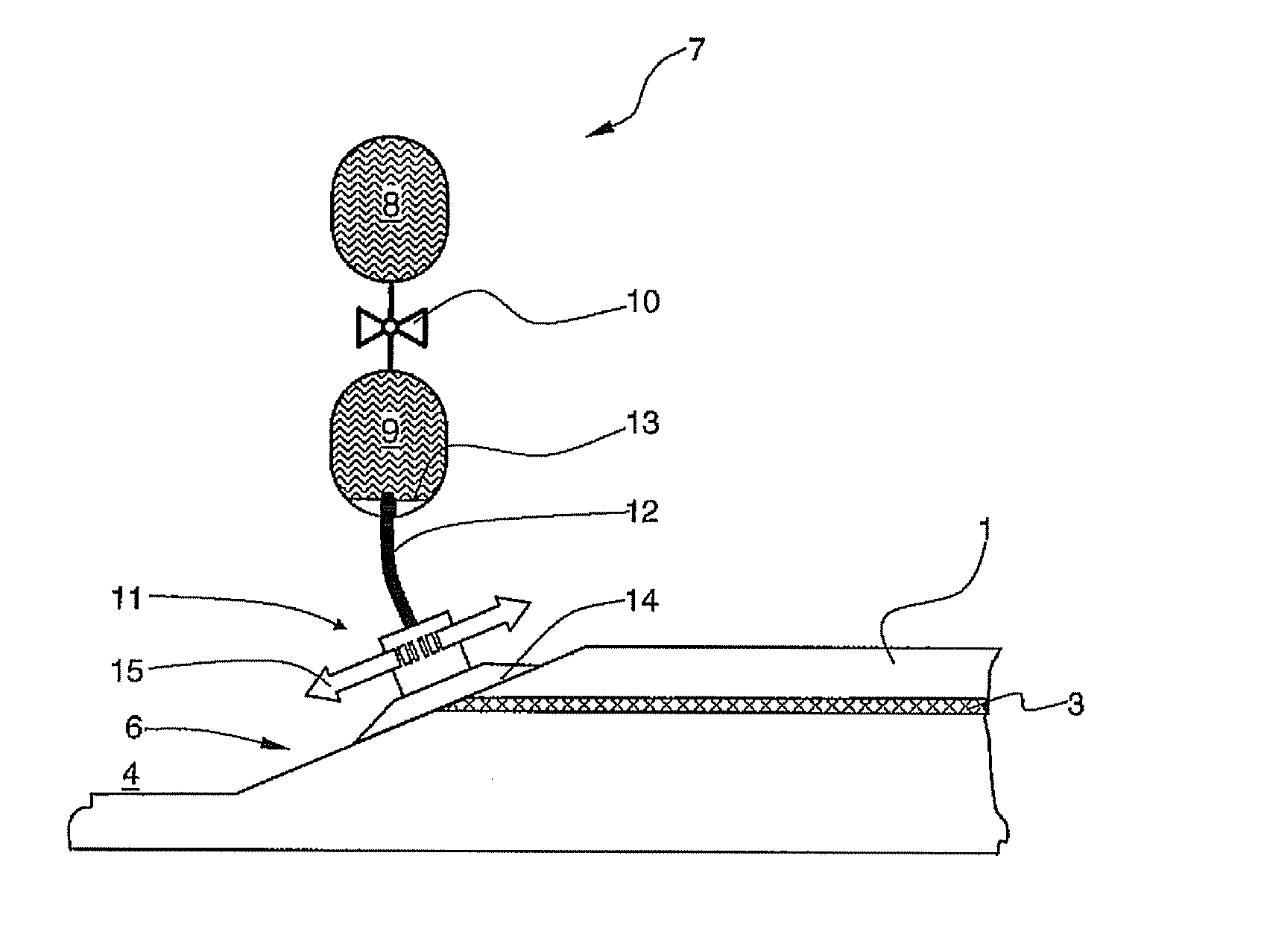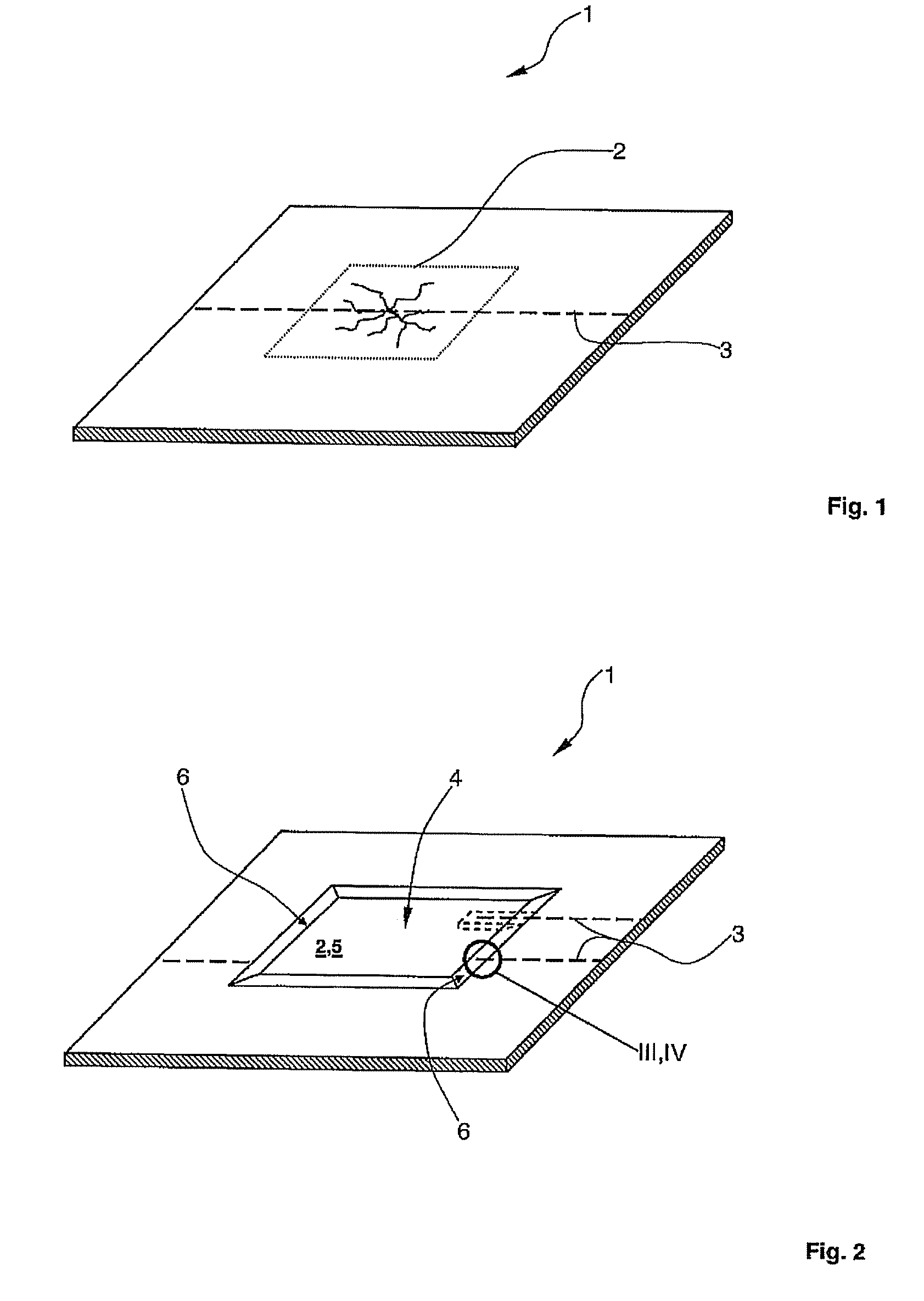Method for repairing a damaged composite component having fibre optics
a composite component and fibre optic technology, applied in the direction of process and machine control, mechanical control devices, instruments, etc., can solve the problems of mechanical damage of such composite fibre components, and the risk of glass fibres integrated therein being damaged, in particular severed
- Summary
- Abstract
- Description
- Claims
- Application Information
AI Technical Summary
Benefits of technology
Problems solved by technology
Method used
Image
Examples
Embodiment Construction
[0035]In the drawing the same structural elements are denoted by the same reference numbers.
[0036]FIG. 1 shows a composite fibre component 1 of an aircraft with a damaged area 2, which has a multiplicity of cracks. The damage in composite fibre component 1 may, for example, have been caused by the impact of foreign bodies (so-called “impact”). The composite fibre component is formed in a known manner with a carbon fibre reinforced settable epoxy resin.
[0037]A fibre optic 3 is embedded or integrated in composite fibre component 1. Fibre optic 3 preferably comprises at least one glass fibre with a diameter of less than 100 μm. Fibre optic 3 serves, for example, to record mechanical loads and result performances of composite fibre component 1 and / or for the detection of crack formation resulting from fatigue phenomena. In addition a multiplicity of control information can be transmitted reliably inside the aircraft with the fibre optic.
[0038]In a first method step damaged area 2 is pre...
PUM
| Property | Measurement | Unit |
|---|---|---|
| angle of inclination | aaaaa | aaaaa |
| diameter | aaaaa | aaaaa |
| diameter | aaaaa | aaaaa |
Abstract
Description
Claims
Application Information
 Login to View More
Login to View More - R&D
- Intellectual Property
- Life Sciences
- Materials
- Tech Scout
- Unparalleled Data Quality
- Higher Quality Content
- 60% Fewer Hallucinations
Browse by: Latest US Patents, China's latest patents, Technical Efficacy Thesaurus, Application Domain, Technology Topic, Popular Technical Reports.
© 2025 PatSnap. All rights reserved.Legal|Privacy policy|Modern Slavery Act Transparency Statement|Sitemap|About US| Contact US: help@patsnap.com



